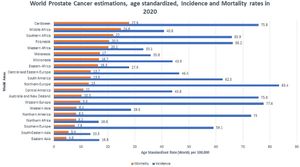A collaborative research team has successfully developed a highly efficient nanocomposite material by dispersing γ-Fe2O3 on reduced graphene oxide (rGO) sheets, demonstrating remarkable potential for the removal of the harmful dye malachite green (MG) from contaminated water. This innovative approach leverages response surface methodology (RSM) to optimize dye removal parameters, paving the way for enhanced water purification processes.
This study highlights the urgent need for effective water treatment solutions, as substantial segments of the global population still rely on contaminated water sources. Organic pollutants, particularly from dyes and industrial discharges, pose significant health risks to humans and ecosystems alike. Adsorption has emerged as one of the most effective methods for removing such toxins, owing to its simplicity and success across various applications.
The research team focused on synthesizing the rGO/γ-Fe2O3 nanocomposite via ultrasonication, with characterization processes confirming the successful formation of the composite through X-ray diffraction (XRD), X-ray photoelectron spectroscopy (XPS), and Fourier-transform infrared spectroscopy (FTIR). Notably, the results revealed significant surface area and adsorption capabilities, which play pivotal roles when tackling dye contaminants.
Based on their assessments, the team employed RSM to explore optimal conditions for MG dye adsorption. The central composite design (CCD) allowed them to reduce experimental runs and pinpoint key parameters influencing the dye removal efficiency. The optimal conditions emerged with statistical parameters such as 200 mg/100 mL of the adsorbent, 80 ppm dye concentration, pH of 7.99, and contact time of approximately 112.68 minutes yielding around 90% dye removal. Optimizations suggested even higher efficiency under extended-range estimations, approaching 98% removal capacity.
The thermodynamic analysis indicated the adsorption process was exothermic and spontaneous, lending credence to its viability. Supporting this effectiveness were adsorption isotherm models, where the Freundlich isotherm fit best, indicating favorable multi-layer adsorption on the nanocomposite's heterogeneous surface. The kinetics of the adsorption process closely aligned with pseudo-second order models, signalling rapid interactions between MG dye and the adsorbent.
Through rigorous testing, the team also verified the stability and durability of the rGO/γ-Fe2O3 nanocomposite, assessing its reusability after multiple cycles without significant performance degradation. Following the studies, researchers attested to the nanocomposite’s economic and ecological benefits, particularly highlighting its rapid dye adsorption kinetics, high capacity, and ease of separation.
These findings open avenues for the practical application of the rGO/γ-Fe2O3 nanocomposite within industrial water treatment systems. The team emphasized the importance of this kind of optimization technique, asserting RSM's capacity to significantly contribute to scaling up dye removal technologies, which is increasingly indispensable as industries strive to minimize the environmental impact of waste disposal.
While additional research may be necessary to explore the limits of this technology across varying conditions and other pollutants, this advancement marks a substantial step toward enhancing water quality and protecting public health.



